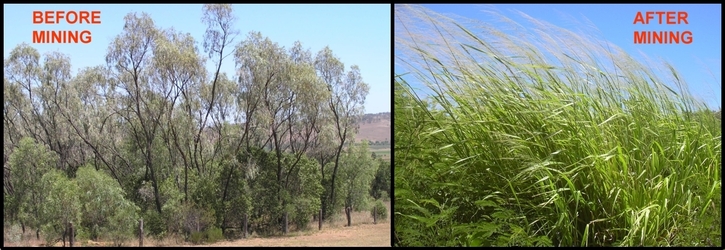To: Minister for Resources Scott Stewart MP
Overhaul Queensland's Outdated Mining Rehabilitation Laws

The legal requirements relating to mine rehabilitation in Queensland must be overhauled in the interests of protecting the state's few remaining natural assets.
Why is this important?
The legal requirements relating to the rehabilitation of mined land in Queensland are essentially based on "last century" thinking. They are long overdue for an overhaul to reflect modern approaches to environmental protection and rehabilitation. Mining companies can get away with far too much in Queensland compared to some other states like Western Australia. In Queensland mining companies do not have to concern themselves with propagating and replanting local species of native flora for instance, and rare and threatened species are often simply left to fend for themselves. Mining companies can in fact rub out trees and plants in the name of mining and/or rehabilitation here, or eradicate rare and threatened species directly or indirectly while claiming total ignorance of any such losses. They really have little or no legal responsibility of care towards native species.
Old mine sites simply have the overburden pushed back on top and exotic pasture species are sown on the disturbed ground. Those exotic species are aggressive and vigorous and form tall, dense stands, quickly overhelming any native species that may be remaining. They infiltrate and dominate surrounding areas of vegetation. They are also very fire promoting, and the more extreme fires that they create push even more native species to the brink.
The current legal requirements on rehabilitation are weak and watery. In the majority of cases, if mines can show cattle grazing on their former mining sites, that is about all they are required to do by law.
Mining companies can get away with far too much when it comes to impacting negatively on the environment. This needs to change. Mining companies must be made responsible and accountable for the existing native biodiversity and prove that they have left that biodiversity in an equivalent or superior state after they have ceased mining operations.
Old mine sites simply have the overburden pushed back on top and exotic pasture species are sown on the disturbed ground. Those exotic species are aggressive and vigorous and form tall, dense stands, quickly overhelming any native species that may be remaining. They infiltrate and dominate surrounding areas of vegetation. They are also very fire promoting, and the more extreme fires that they create push even more native species to the brink.
The current legal requirements on rehabilitation are weak and watery. In the majority of cases, if mines can show cattle grazing on their former mining sites, that is about all they are required to do by law.
Mining companies can get away with far too much when it comes to impacting negatively on the environment. This needs to change. Mining companies must be made responsible and accountable for the existing native biodiversity and prove that they have left that biodiversity in an equivalent or superior state after they have ceased mining operations.

